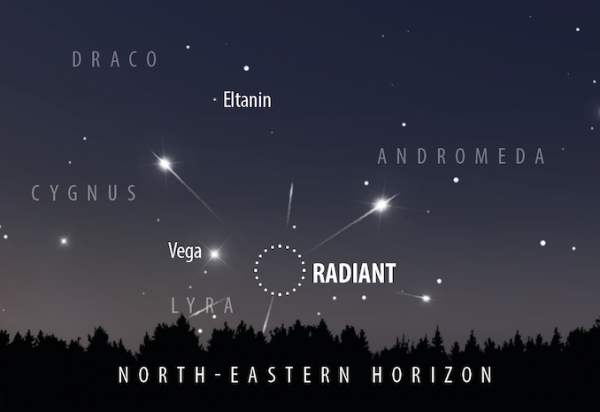Beginners’ astronomy: how to see the Lyrid meteor shower – Astronomy Now Online
Shooting stars will be seen zipping through the night sky this week with the arrival of the peak of the Lyrid meteor shower, coinciding with the warmish evenings and clear skies that we’ve been experiencing recently (well, at least here in the UK).
If you’ve never seen a meteor shower, then with no work or school for many people in the morning thanks to the continuing COVID-19 lockdown, this is a great opportunity to stay up late and witness nature’s own fireworks.

The Lyrid meteor shower runs from 16 April to 25 April, but the peak of the shower – when you can see the most meteors – falls on the night of 21/22 April. Don’t expect to see hundreds of meteors shooting across the sky, however. At best you’ll probably only see ten or so meteors per hour – there are, admittedly, much better meteor showers later in the year. However, this year the Lyrid meteor shower coincides with New Moon on 23 April, so with no glare from moonlight, some of the fainter Lyrid meteors should be more easily spotted.
So, how do you got about spotting them? As the name suggests, the radiant of the Lyrid meteor shower is in the direction of the constellation of Lyra, the Lyre, signposted by the bright star Vega. The radiant is where the meteors appear to be coming from. In reality, the meteors are cosmic dust left behind in a stream long ago by the comet C/1861 G1 (Thatcher), and the direction of Lyra is the direction through which Earth is moving through this stream.
Now, Lyra is usually a constellation best viewed in the summer – currently, in April at 10pm, Lyra is close to the north-eastern horizon. However, the trick to spotting a meteor shower is not to look at the radiant, which will only just be rising by 10pm, but to look about fifty degrees above and away from it (to guesstimate where 50 degrees elevation is in the sky, remember that the horizon is at zero degrees, and directly above you is ninety degrees, so 50 degrees is just a little past half way).
If you see a meteor, draw an imaginary line back from where you think it came. If that line takes you to the region near Lyra above north-eastern horizon, then you’ve seen a Lyrid meteor. (There are also random, ‘sporadic’ meteors that can occur at any time on any night, and are not related to distinct meteor showers.)
Each meteor is just a speck of comet dust burning up high in the atmosphere. Lyrid meteors are pretty fast – they move at 50 kilometres per second, and they don’t usually leave a lingering trail, or ‘train’ – they are there and gone in a second. If you have a garden to observe from, it can help to have the family out with you, all looking, to increase everyone’s chances of spotting the fleeting flashes of the shooting stars. However, sometimes a Lyrid meteor can produce more than just a streak of light and instead a brilliant fireball as a large piece of comet debris enters the atmosphere. And, on occasion, the Lyrid meteor shower has been known to ‘storm’ as Earth has passed through a denser patch of the comet dust stream. However, the last time this happened was in 1982, when hundreds of meteors per hour were seen. The chances of that happening again this week are slim, but you never know!






